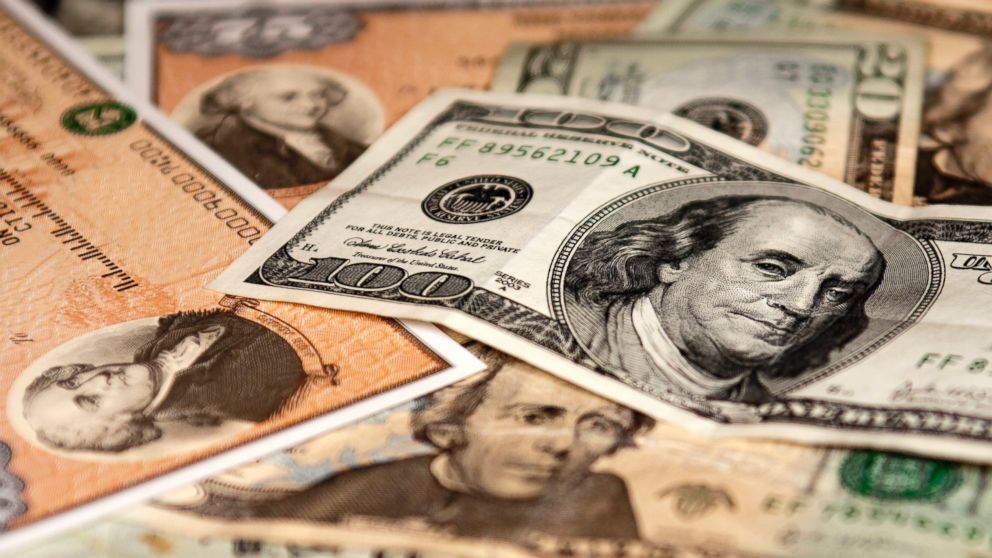How to Tell Good Debt From Bad Debt
The Indebted States of America: How much debt is too much?

Feb. 3, 2014 -- We are a nation of debtors. Altogether, American consumers are $11.3 trillion in debt.
More than $856 billion of this is from credit cards — the average individual credit card debt is more than $15,000 — and more than $1 trillion comes from student loans (the average loan total is more than $32,000). So, if you’re looking back fondly at that New Year’s resolution you made several weeks ago to get out of debt for good, you shouldn’t feel alone. But you don’t have to remain part of this crowd. Folksinger/songwriter Woody Guthrie famously made and kept New Year’s resolutions. You can do the same regarding your debt.
The key is to have a viable plan to get out, a plan for paying off debt that hinges on spending less. After all, a lot of credit card debt isn’t from buying essentials, but from overspending on things you could live without. Once people resolve to pay off debt, they impede their ability to do so efficiently by subscribing to the misguided notion, advanced by some financial gurus, that all debt is the same. In a nation where all men are created equal, all debt is not.
A good example is mortgage debt — nationally totaling $7.92 trillion — versus credit card debt. In the case of a house, you are buying an asset you can’t purchase for cash. You also expect this asset to increase in value over the long haul. So, while you pay interest on this purchase, you may own an asset that increases more in value over time than the interest you are paying. For example, take a $250,000 house that you purchase with a $50,000 down payment. If you have a 4 percent mortgage, your interest payment on the loan the first year will be just under $8,000. If the value of the house goes up 5 percent per year on average, it increases by $12,500 the first year. So this isn’t a bad investment decision. And you get to live in and enjoy the home for the year.
Moreover, the monthly payment is set for the term of the mortgage, and gradually pays it off. Car loans work basically the same way; payments are the same for the term of the loan because all interest has been figured in from the beginning. This is in stark mathematical contrast to the compounding interest of credit cards, which could literally have no end because you are paying interest on your interest on your interest, ad infinitum. Albert Einstein, a guy who knew something about infinity, famously called compound interest the “eighth wonder of the world.”
So if you’re set on paying off all debt, start with the cards and keep paying your mortgage. Mortgage interest rates have been so low for so long that chances are you could benefit by making other investments with the money you would use to pay off the house.
Despite all the talk about cheap money from low interest rates (rates that have pushed down bond yields), credit card companies haven’t lowered their rates to reflect credit market reality. The average annual rate is about 15 percent per year, and they run up to 28 percent.
But when it comes to paying you on savings deposits, the same banks that issue credit cards are right in step with market rates. The average savings account rate is currently .06 percent. The spread between 28 percent and .06 percent provides a lot of nice summer homes for bank executives.
So, you are paying a bank interest that is several hundred times the interest that the bank would pay you. When Don Henley, in the song “Gimme What You Got,” said, “’Cause a man with a briefcase/Can steal more money/Than any man with a gun,” you know where he was coming from.
Whether debt is good or bad depends on the numbers, and on what alternatives may be available.
All debt must be managed. For example, when you can switch to a lower rate — without fees so high they defeat the purpose — be sure to do so. That means refinancing your mortgage when the net total savings far exceed the fees involved. This mentality also means using low-cost balance transfers with low one-time fees, to get zero-interest periods, enabling you to pay off credit cards. Of course, to get these deals, you must have good credit by paying on time. Many people have trouble doing so because their credit card debt is so high.
As with any investment decision, you should look carefully at expected returns and opportunity costs of any kind of borrowing. Borrowing money can be a sound decision — for college, a house or things that are important to improving your life. The compulsion to borrow money to consume more goods and services than you can afford or actually need is how banks take your money.
This work is the opinion of the columnist and in no way reflects the opinion of ABC News.
Ted Schwartz, a certified financial planner, is president and chief investment officer of Capstone Investment Financial Group. He advises individual investors and endowments, and serves as the adviser to CIFG UMA accounts. Because Schwartz has a background in psychology and counseling, he brings insights into personal motivation when advising clients on how to achieve their wealth management goals. Schwartz holds a B.A. from Duke University and an M.A. from Oregon State University. He can be reached at ted@capstoneinvest.com.




